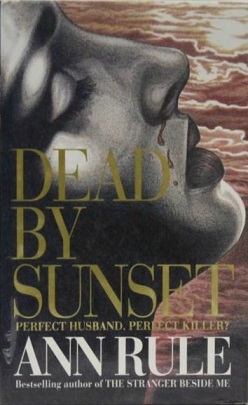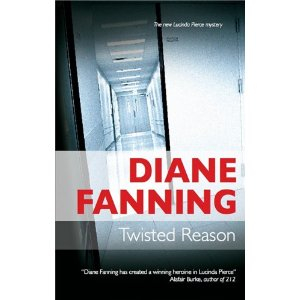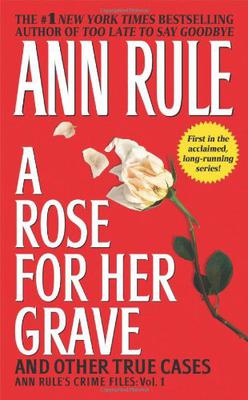
Ann Rae Rule was an American author of true crime books and articles. She is best known for The Stranger Beside Me (1980), about the serial killer Ted Bundy, with whom Rule worked and whom she considered a friend, but was later revealed to be a murderer. Rule wrote over 30 true crime books, including Small Sacrifices, about Oregon child murderer Diane Downs. Many of Rule's books center on murder cases that occurred in the Pacific Northwest and her adopted home state of Washington.
Lisa Pulitzer is an American author and journalist. Pulitzer is a former correspondent for The New York Times newspaper. She is the author/ghostwriter of more than fifteen non-fiction books. In addition to her own books, Pulitzer has written a number of memoirs including several about young women who have escaped fundamentalist religion including Jenna Miscavige Hill, the former Scientologist, Lauren Drain, the ex-member of Westboro Baptist Church, and Elissa Wall, who wrote about her experiences after leaving the Fundamentalist Church of Jesus Christ of Latter-Day Saints. Pulitzer left journalism in 1998 while pregnant with her first child to concentrate on writing books and has had numerous publications on The New York Times Best Seller list.

John Edward Douglas is an American retired special agent and unit chief in the United States Federal Bureau of Investigation (FBI).
Cheryl Keeton was a Portland, Oregon lawyer who was found dead inside her Toyota van on the Sunset Highway (Oregon) by a passing motorist. Her husband, with whom she was embroiled in a divorce, was found guilty of murder.

Dead by Sunset is a 1995 true crime nonfiction book by author Ann Rule. It is based on the 1986 Oregon case of the murder of Cheryl Keeton, who was found beaten to death inside her van on the Sunset Highway and the later conviction of her estranged husband, Brad Cunningham. The book made The New York Times Best Seller list in 1996.

Aphrodite Jones is an American author, reporter, and television producer.
Gregg Olsen is a New York Times, USA Today and The Wall Street Journal bestselling author of nonfiction books and novels, most of which are crime-related. The subjects of his true crime books include convicted child rapist and school teacher Mary Kay Letourneau, product tampering killer Stella Nickell, fasting specialist Linda Burfield Hazzard, and former Amishman and convicted murderer Eli Stutzman.

The Poisoner's Handbook: Murder and the Birth of Forensic Medicine in Jazz Age New York is a New York Times best-selling non-fiction book by Pulitzer Prize-winning science writer Deborah Blum that was released by Penguin Press in 2010.
Mathew William Phelps is an American crime writer and investigative journalist, podcaster, and TV presenter.

The Lucinda Pierce Mystery series is a book series written by American non-fiction author and novelist Diane Fanning, debuted in 2008 with The Trophy Exchange. The four-part series, released by Severn House in the UK and US, features Virginia Homicide Detective Lucinda Pierce as she follows the evidence and investigates murders. Known for her non-fiction true crime books, Publishers Weekly described the series as "double duty for Fanning."

Death Without Dignity: The Story of the First Nursing Home Corporation Indicted for Murder is a true crime non-fiction book by American author Steven Long that was released in 1987 by Texas Monthly Press. It was Long's first book, written while he was publisher and editor of the alternative weekly newspaper In Between.
Shanna Hogan was an American non-fiction author and journalist. She was best known for writing the book Picture Perfect about convicted murderer Jodi Arias.

Michelle Eileen McNamara was an American true crime author. She was the author of the true crime book I'll Be Gone in the Dark: One Woman's Obsessive Search for the Golden State Killer, and helped coin the moniker "Golden State Killer" of the serial killer who was identified after her death as Joseph James DeAngelo. The book was released posthumously in February 2018 and later adapted into the 2020 HBO documentary series I'll Be Gone in the Dark.
Rebecca Morris is a New York Times bestselling true-crime author and a TV, radio and print journalist who lives in Seattle, Washington.

A Rose for Her Grave and Other True Cases is the first book in author Ann Rule's Crime Files Series. Released in 1993 by Pocket Books, the book details Randy Roth, who murdered two of his wives for insurance money, as well as other cases, including those of Dick Marquette, a convicted Oregon serial killer.
Casey Cep is an American author and journalist. Cep is a staff writer at The New Yorker, and her work has appeared in The New York Times, The Paris Review, The New Republic, and other publications. Cep's debut non-fiction book, published by Knopf, Furious Hours: Murder, Fraud, and the Last Trial of Harper Lee (2019), tells the story of how Harper Lee worked on, but ultimately failed to publish, an account of a murder trial that happened in Alabama in 1977.

CHAOS: Charles Manson, the CIA, and the Secret History of the Sixties is a 2019 nonfiction book written by Tom O'Neill with Dan Piepenbring. The book presents O'Neill's research into the background and motives for the Tate–LaBianca murders committed by the Manson Family in 1969. O'Neill questions the Helter Skelter scenario argued by lead prosecutor Vincent Bugliosi in the trials and in his book Helter Skelter (1974). The book's title is a reference to the covert CIA program Operation CHAOS.

19th Christmas is the nineteenth novel in the Women's Murder Club novel series by James Patterson and Maxine Paetro.

Just Mercy: A Story of Justice and Redemption (2014) is a memoir by American attorney Bryan Stevenson that documents his career defending disadvantaged clients. The book, focusing on injustices in the United States judicial system, alternates chapters between documenting Stevenson's efforts to overturn the wrongful conviction of Walter McMillian and his work on other cases, including children who receive life sentences, and other poor or marginalized clients.
Sylvia Haymon was a British writer of mystery fiction, autobiography, and other fiction and nonfiction. As an adult, she worked in public relations, broadcasting, journalism, and farming, and published nonfiction that included two childhood memoirs, a historical novel, biographies of Bonnie Prince Charlie and Monmouth, and a history of Norwich, her birthplace. Writing under the pseudonym S. T. Haymon, she became well-known for her police procedural series featuring Detective Inspector Ben Jurnet. She won the Crime Writers Association Silver Dagger Award in 1983 for Ritual Murder.












